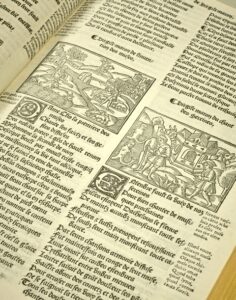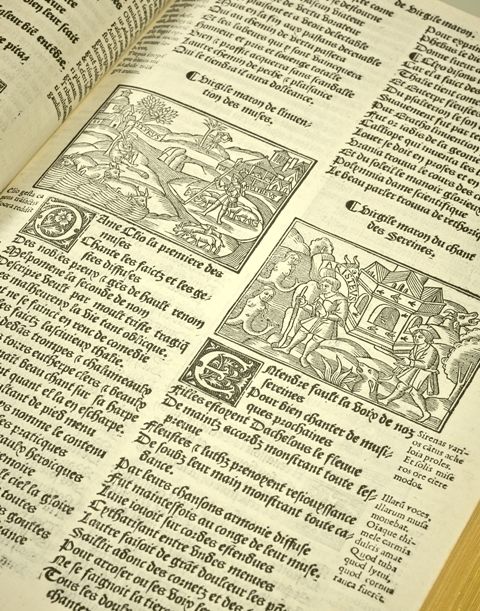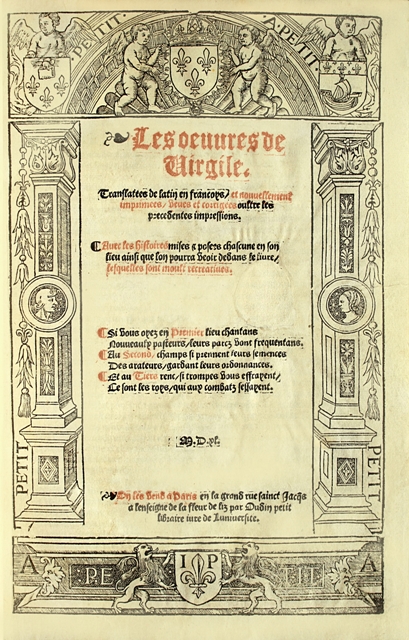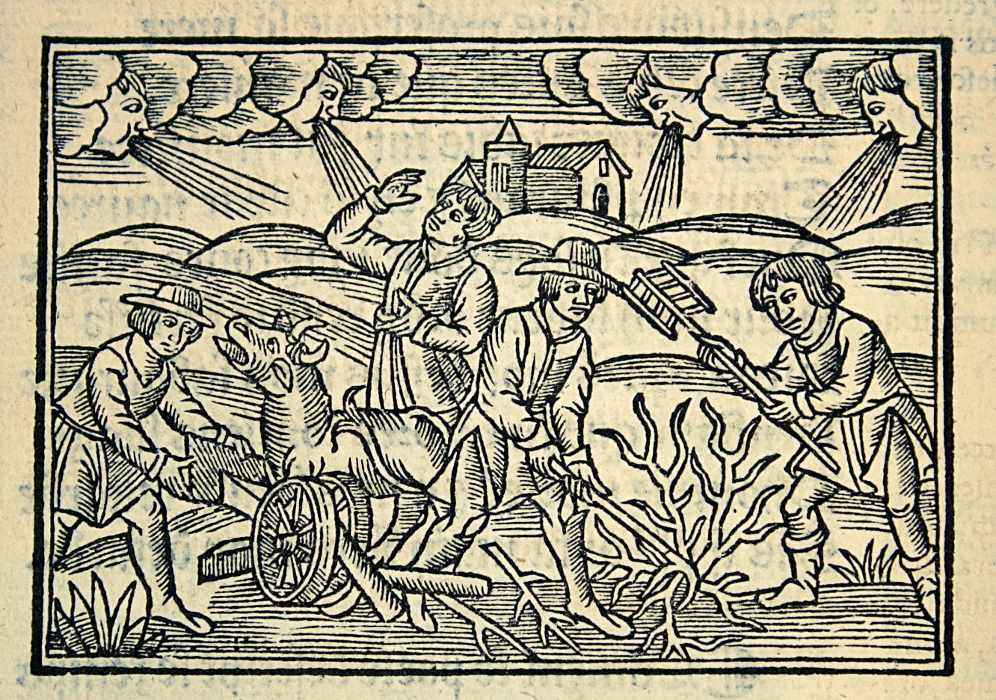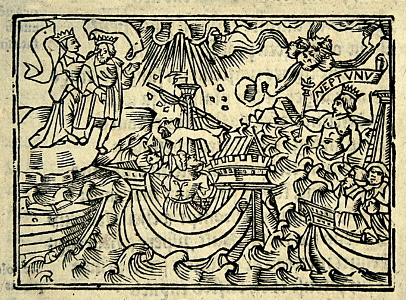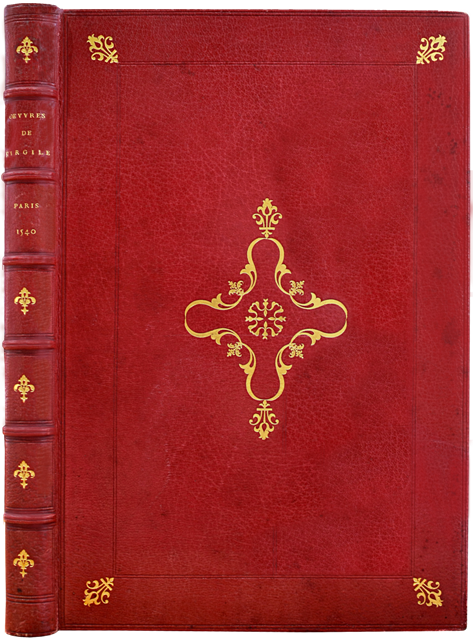Paris, Jehan Petit pour Oudin, 1540.
Small gothic folio [291 x 193 mm] of (2) preliminary ll. including the frontispiece-title printed in red and black, 76 ll., illustrated with 53 engravings in the text, 125 ll. (small repair in the title not affecting the text) illustrated with 106 engravings in the text, (1) l. Red straight-grained morocco, double frame of doubled blind-stamped fillet, large gilt fleuron on the center of the covers, gilt fleurons in the corners, spine ribbed and illustrated with gilt fleurons, inner gilt border, gilt over marbled edges. Binding signed by Capé.
Precious second French illustrated edition of Virgil’s complete work. The translation in verse in two columns (the first one is dated 1529) is, for the Bucoliques and the Géorgiques by Guillaume Michel dit de Tours, and for the Aeneid by Octavien de Saint Gelais. This last part starts with a separate title illustrated with a woodcut representing the author.
Tchemerzine (V, 633), mentions this edition without specifying the printer of this copy, Jehan Petit. Brunet (V, 1300) doesn’t mention either this printer.
Very carefully printed in gothic letters, the edition has, in the margins of the French text, the Latin one in Roman letters.
Much more illustrated than the first edition (around 20 figures), this one is illustrated with 159 remarkable woodcuts in first state, large as a column, “very finely executed” (Brun, Le Livre français illustré de la Renaissance, 312).
The Bucoliques and the Géorgiques are illustrated with 53 engravings depicting the rural life and field works, some of them being repêted after 24 different woods. The Aeneid is illustrated with 106 fine woodcuts (75 x 56 mm) exactly following the text and giving the name of the different characters on phylacteries. The main title is inserted in a large architectural portico with medallions with the name of Jehan Petit (Renouard 904). It is illustrated with Royal arms and the city of Paris arms. The last lêf depicts Jehan Petit large mark with the 2 lions bêring the fleur de lis arms. (108 x 82 mm).
Octavien de Saint-Gelais, born in Cognac, towards 1466, from a family that claimed to come from the ancient house of Lusignan, in Poitou, studied in Paris, took up the ecclesiastic life, but tried on poetry nonetheless. His birth and his talents got him to Charles VIII court. This prince had him named, in 1494, at the diocese of Angoulême by Pope Alexander VI. Saint-Gelais gave then up all the frivolities of his youth. “He was seen as one of the grêtest poets of his time”. “Virgil is the friend of the solitary, the companion of life’s secret hours… Virgil’s depictions aren’t limited to some perspectives of life; they represent the whole nature: they are the depth of the forests, the looks of the mountains, the shores of the sê, where women in exile look at, crying, the immensity of the waves…” Chatêubriand.
A very bêutiful copy of an extremely rare work, one of the most refined 16th century illustrated French books, finely bound in red morocco decorated by Capé, one of the finest Parisian binders of the Second Empire.
See less information
